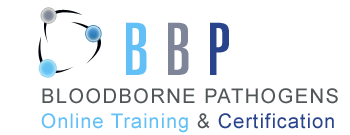First Aid 2017
The employer shall ensure the ready availability of medical personnel for advice and consultation on matters of plant health.
1910.151(b)
In the absence of an infirmary, clinic, or hospital in near proximity to the workplace which is used for the treatment of all injured employees, a person or persons shall be adequately trained to render first aid. Adequate first aid supplies shall be readily available.
1910.151(c)
Where the eyes or body of any person may be exposed to injurious corrosive materials, suitable facilities for quick drenching or flushing of the eyes and body shall be provided within the work area for immediate emergency use.
[63 FR 33450, June 18, 1998]
Preparing to Respond to a Health Emergency
Prevention as a strategy in reducing fatalities, illnesses and injuries;
Interacting with the local EMS system;
Maintaining a current list of emergency telephone numbers (police, fire, ambulance, poison control) accessible by all employees;
Understanding the legal aspects of providing first-aid care, including Good Samaritan legislation, consent, abandonment, negligence, assault and battery, State laws and regulations;
Understanding the effects of stress, fear of infection, panic; how they interfere with performance; and what to do to overcome these barriers to action;
Learning the importance of universal precautions and body substance isolation to provide protection from bloodborne pathogens and other potentially infectious materials. Learning about personal protective equipment -- gloves, eye protection, masks, and respiratory barrier devices. Appropriate management and disposal of blood-contaminated sharps and surfaces; and awareness of OSHA’s Bloodborne Pathogens standard.
Assessing the Scene and the Victim(s)
Assessing the scene for safety, number of injured, and nature of the event;
Assessing the toxic potential of the environment and the need for respiratory protection;
Establishing the presence of a confined space and the need for respiratory protection and specialized training to perform a rescue;
Prioritizing care when there are several injured;
Assessing each victim for responsiveness, airway patency (blockage), breathing, circulation, and medical alert tags;
Taking a victim’s history at the scene, including determining the mechanism of injury;
Performing a logical head-to-toe check for injuries;
Stressing the need to continuously monitor the victim;
Emphasizing early activation of EMS;
Indications for and methods of safely moving and rescuing victims;
Repositioning ill/injured victims to prevent further injury.
Responding to Life-Threatening Emergencies
Establishing responsiveness;
Establishing and maintaining an open and clear airway;
Performing rescue breathing;
Treating airway obstruction in a conscious victim;
Performing CPR;
Using an AED;
Recognizing the signs and symptoms of shock and providing first aid for shock due to illness or injury;
Assessing and treating a victim who has an unexplained change in level of consciousness or sudden illness;
Controlling bleeding with direct pressure;
Poisoning
• Ingested poisons: alkali, acid, and systemic poisons. Role of the Poison Control Center (1-800-222-1222);
• Inhaled poisons: carbon monoxide; hydrogen sulfide; smoke; and other chemical fumes, vapors, and gases. Assessing the toxic potential of the environment and the need for respirators;
• Knowledge of the chemicals at the worksite and of first aid and treatment for inhalation or ingestion;
• Effects of alcohol and illicit drugs so that the first-aid provider can recognize the physiologic and behavioral effects of these substances.
Recognizing asphyxiation and the danger of entering a confined space without appropriate respiratory protection. Additional training is required if first-aid personnel will assist in the rescue from the confined space.
Responding to Medical Emergencies
• Chest pain;
• Stroke;
• Breathing problems;
• Anaphylactic reaction;
• Hypoglycemia in diabetics taking insulin;
• Seizures;
• Pregnancy complications;
• Abdominal injury;
• Reduced level of consciousness;
• Impaled object.
Responding to Non-Life-Threatening Emergencies
Wounds
• Assessment and first aid for wounds including abrasions, cuts, lacerations, punctures, avulsions, amputations and crush injuries;
• Principles of wound care, including infection precautions;
• Principles of body substance isolation, universal precautions and use of personal protective equipment.
Burns
• Assessing the severity of a burn;
• Recognizing whether a burn is thermal, electrical, or chemical and the appropriate first aid;
• Reviewing corrosive chemicals at a specific worksite, along with appropriate first aid.
Temperature Extremes
• Exposure to cold, including frostbite and hypothermia;
• Exposure to heat, including heat cramps, heat exhaustion and heat stroke.
Musculoskeletal Injuries
• Fractures;
• Sprains, strains, contusions and cramps;
• Head, neck, back and spinal injuries;
• Appropriate handling of amputated body parts.
Eye injuries
• First aid for eye injuries
• First aid for chemical burns.
Mouth and Teeth Injuries
• Oral injuries; lip and tongue injuries; broken and missing teeth;
• The importance of preventing aspiration of blood and/or teeth.
Bites and Stings
• Human and animal bites
• Bites and stings from insects; instruction in first-aid treatment of anaphylactic shock.
Specific program elements include training specific to the type of injury: shock, bleeding, poisoning, burns, temperature extremes, musculoskeletal injuries, bites and stings, medical emergencies, and confined spaces. Instruction in the principles and first aid intervention of injuries will cover the following sites: head and neck, eye, nose, mouth and teeth, chest, abdomen, and hand, finger, and foot injuries.
Testimonials
Individual
"Thanks for the fast service! I needed my certification before I could begin my new job. I was able to complete the test and print my certificate in time to start work Monday morning." Janet F., Orlando, FL.
Company
"Over 200 employees throughout our offices are required to complete Blood borne Pathogen Certification annually. Employee availability and scheduling conflicts made it nearly impossible to schedule an onsite class. We were pleased to learn that our OSHA requirements can be satisfied online. Looking forward to the ease of use next year." Mary M., Cardinal Health
Follow Us
Contact Us
Have a question? Customer service representatives are standing by to assist.

